Building a Carriage Home
Building your custom carriage home
Steps to Build a Carriage Home
Building a carriage home is a fantastic way to add value and utility to your property. Here’s a step-by-step guide to help you navigate the process:
1. Define Your Purpose
Decide if the carriage home will serve as a rental unit, guest house, office space, or living quarters for family members. This will influence design, layout, and features.
2. Plan Your Budget
Costs for carriage homes typically range from $100,000 to $300,000+, depending on size, materials, and whether you’re managing the build yourself or hiring professionals.
3. Choose Your Design
- Prioritize space efficiency with open layouts and multi-functional furniture.
- Consider features like loft spaces, built-in storage, and separate entrances for privacy.
- Decide on utilities like plumbing, heating, and electricity early in the design phase.
4. Foundation Options
- Slab or Crawl Space: These are common choices for permanent structures and meet most building codes.
- Garage Integration: If building above a garage, ensure the foundation can support additional weight.
5. Select Materials
- Use durable and energy-efficient materials, especially for insulation, windows, and roofing.
- Opt for fire-resistant materials if located in wildfire-prone areas like the Okanagan Valley.
6. Address Zoning and Permits
- Check local zoning bylaws and building codes for secondary dwellings.
- Obtain necessary permits for construction, plumbing, and electrical work.
7. Incorporate Utilities
- Plan for water (municipal hookups, wells, or cisterns), electricity (grid-tied or solar), and waste systems (septic or municipal sewer).
- Consider adding smart home systems for energy efficiency and convenience.
8. Interior Finishing
- Focus on comfort and functionality, using features like fold-out furniture, under-stair storage, and efficient kitchen and bathroom layouts.
- Customize finishes to match your home’s existing aesthetic or create a unique style for the carriage home.
9. Inspection and Finalization
- Schedule inspections at key stages to ensure compliance with safety standards and local regulations.
- Address any issues before finalizing the build and obtaining occupancy approval.
Things to Consider
- Climate: Ensure adequate insulation, weatherproof roofing, and efficient heating and cooling systems for year-round comfort in the Okanagan.
- Land Use: Confirm the carriage home complies with property size, setbacks, and land use regulations.
- Future Value: Carriage homes can boost property value and offer potential rental income but should align with market demand in your area.

